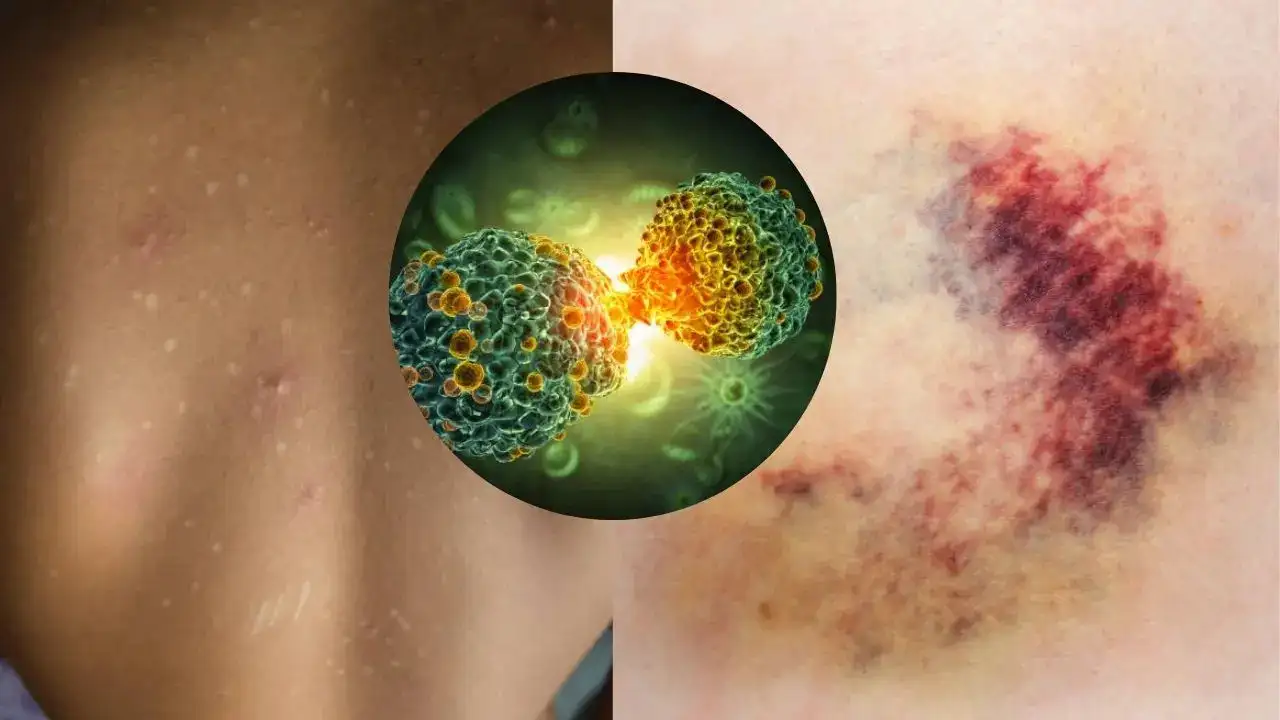
A few rare types of skin cancer may be mistaken for other skin conditions entirely
Skin cancer is among the fastest-growing cancers in the world. According to experts, you must perform regular skin checks at home to know that can help you identify if something is wrong.
Doctors say one of the most obvious signs of skin cancer is an abnormal-looking mole - a spot that has grown or changed since the last time you checked. It is one of the most common signs of melanoma. As per the American Academy of Dermatology, you should use the ABCDEs of melanoma to check your moles, which include asymmetry, uneven borders, colour, diameter, and evolution. However, these are not the only warning signs.
The three major types of skin cancer - basal and squamous cell carcinomas and melanoma—often look different. A few rare types of skin cancer may be mistaken for other skin conditions entirely. Here's what you need to know about checking your skin the next time you give your largest organ a once-over.
Waxy bumps
There are times when skin cancer shows up as a clear or skin-coloured bump. According to doctors, you may mistake it for a pimple or a bug bite and give it a chance to heal. However, a translucent and waxy bump could be an early-stage basal or squamous cell skin cancer.
Sometimes, the bump may never even hurt, bleed, or cause other symptoms. A hard bump on your eyelid can also signify rare skin cancer known as sebaceous gland carcinoma, which starts in oil glands.
Scaly patches on the skin
If you have been experiencing even a bit of scaly skin such as eczema or dryness and it does not go away, it could be a sign of basal or squamous cell carcinoma. According to doctors, if ignored, the patch may also grow slowly, showcasing swelling and crusty scales on the surface.
Oozing from the skin
Doctors say a classic basal cell carcinoma lesion oozes, crusts over, and does not heal. If you notice any spots that bleed, ooze, or crust, see a dermatologist immediately.
Red or purple lesions
If you notice red or purple lesions, they could be a sign of a rare skin cancer that looks harmless and painless and is often mistaken for other common skin lesions. The bumps grow quickly over a few weeks to months. Additionally, they can also develop on the head or neck, places that have received a lot of sun over the years.
When should you see a doctor?
Doctors say while skin cancer is one of the most common cancers across the world, it is also one of the most preventable cancers. It is highly treatable when detected early. If you habitually check your skin often, you are more likely to notice changes. Monthly self-checks can be a good frequency, but check with your dermatologist for their recommendation.
If you find a spot on your skin that could be skin cancer, make an appointment to see a dermatologist immediately.
